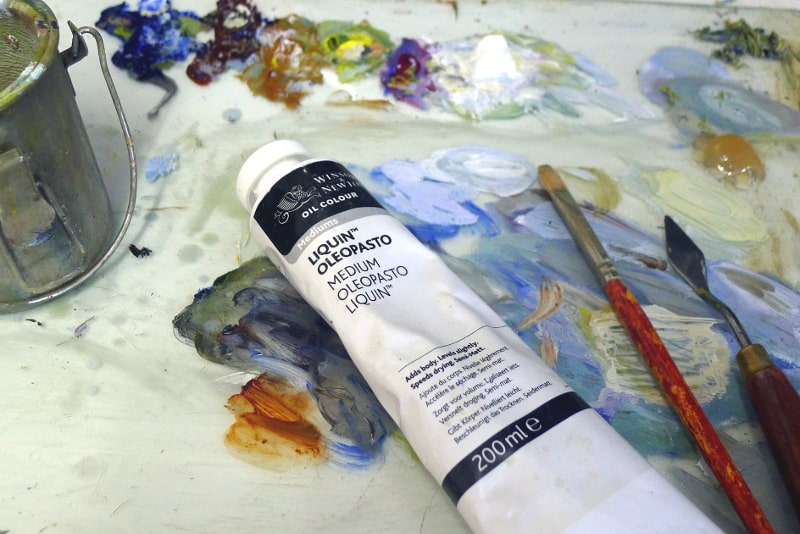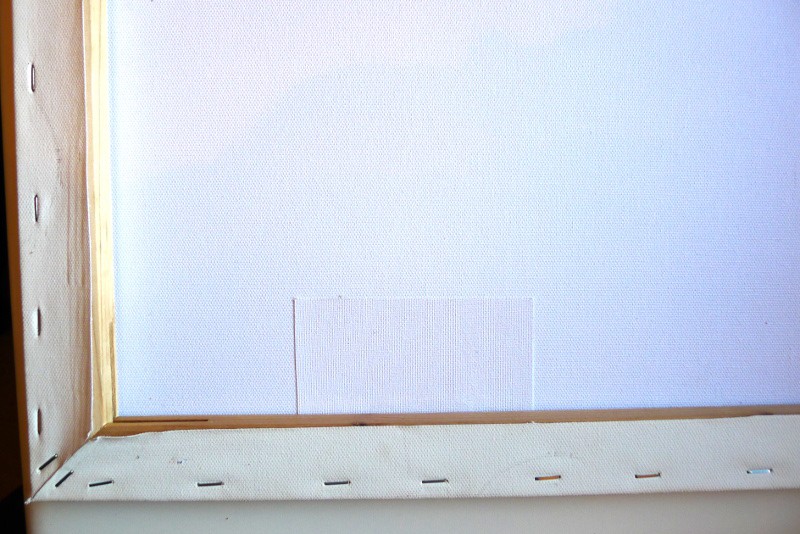A ripped canvas painting can be a heartbreaking sight, leaving you with a cherished memory hanging in tatters. But fear not, dear reader, for there is hope. In this comprehensive guide, we will embark on a journey to restore your beloved artwork back to its former glory. With meticulous care, expert insights, and a touch of tender love, we will mend the torn canvas of your precious memories, weaving in new threads of resilience. So, let us delve into the art of art restoration, where the sutures of time meet the brushstrokes of renewal.

Image: www.chrischalkart.com
Canvas Rips: Understanding the Anatomy of a Wound
Before we embark on the path to healing, it is paramount to comprehend the nature of the wound we seek to mend. A canvas rip, like any other physical tear, can manifest in various forms, each requiring a unique approach to restoration. The severity of the tear, the type of canvas, and the nature of the materials used in the painting will all influence the repair strategy. As we navigate the repair process, we will gently examine your painting’s wound, deciphering its characteristics to determine the most appropriate treatment plan.
Tools of the Trade: An Arsenal for Canvas Restoration
Just as a surgeon relies on a meticulous set of instruments, so too must we assemble an arsenal of tools for our delicate repair mission. The following list represents the essential tools that will accompany us on this journey of canvas restoration:
-
Acid-free tissue paper: These delicate sheets will serve as a gentle buffer, protecting the painting’s surface during the repair process.
-
Spatula or palette knife: A thin, flexible spatula or palette knife will become an extension of your hand, aiding in the precise application of adhesives and smoothing of canvas fibers.
-
Adhesive: This is the glue that will mend the torn canvas. We will explore various adhesives, each suited to specific types of canvas and tears, ensuring a strong and invisible bond.
-
Fine brushes: A set of fine brushes will become your allies in precision work, allowing for the delicate application of adhesives and touch-ups.
-
Wax paper or baking paper: These non-stick surfaces will provide a temporary protective barrier during certain steps of the repair process.
-
Weights: Weights, such as books or heavy objects, will assist in applying pressure and ensuring a firm bond between the repaired canvas and adhesive.
Art of Restoration: A Journey of Healing and Renewal
With our tools at the ready, we embark on the art of restoration, a delicate dance of precision and patience. Each step of the process will be carefully explained, empowering you to restore your cherished painting with confidence and care.
-
Initial Assessment: As we gaze upon your wounded canvas, an empathetic assessment is conducted. We meticulously examine the tear’s characteristics, identifying the canvas type, the nature of the paint, and the extent of the damage. This initial assessment lays the foundation for selecting the most appropriate repair technique.
-
Preparing the Canvas: Before administering any treatment, a gentle preparation is necessary. Using soft, acid-free tissue paper, we meticulously clean the周辺area around the tear, removing any loose paint or debris. This creates an optimal surface for the adhesive to bond effectively.
-
Layering the Canvas: Should the tear be extensive, we may employ a reinforcement technique known as canvas layering. A small piece of compatible canvas is carefully placed beneath the torn area, providing additional support and stability to the repair. This step ensures the longevity of the restoration, preventing the tear from recurring in the future.
-
Applying Adhesive: With steady hands, we select the appropriate adhesive for your canvas and tear. Using fine brushes or a spatula, the adhesive is meticulously applied to the torn edges. A delicate touch is essential to ensure an invisible bond without disrupting the painting’s integrity.
-
Joining the Canvas: The moment of truth arrives as we carefully align the torn canvas edges, gently pressing them together. Weights are employed to provide even pressure, ensuring a firm bond between the canvas fibers and adhesive. Patience becomes our ally as we allow the adhesive to fully set, solidifying the mend.
-
Blending the Repair: The art of restoration extends beyond mending the physical tear. With a keen eye, we meticulously observe the repaired area, identifying any visible imperfections or color discrepancies. Using fine brushes and paints that match the original artwork, we delicately blend the repair into the surrounding canvas. This step ensures a harmonious visual appearance, concealing the scar of the tear.
-
Varnishing: An optional but often recommended step is the application of a protective varnish. This transparent coating acts as a shield, safeguarding the repaired area from environmental factors that could potentially damage the painting over time. A fine brush is employed to evenly distribute the varnish, ensuring a seamless finish.

Image: www.chrischalkart.com
How To Fix A Ripped Canvas Painting
Conclusion: A Canvas Rejuvenated, Memories Restored
As we step back to admire our handiwork, a sense of accomplishment washes over us. The once-torn canvas has been meticulously restored, the memory it holds lovingly preserved. With each stitch, we have mended not only a physical tear but also the emotional bond you share with this cherished artwork. The repaired painting becomes a testament to the resilience of art and the enduring power of memories.
Remember, dear reader, that the art of restoration is not merely about mending torn canvases but also about healing the wounds time inflicts on our most precious memories. With careful hands and a touch of empathy, you too can breathe new life into your cherished artworks, ensuring that they continue to grace your life with their beauty and sentimental value. We encourage you to embark on this journey of restoration, knowing that the rewards will far outweigh the effort.